Industry Research – Patient Satisfaction with Hearing Aids and Machine-Learning in Real-Life Listening Environments
INTRODUCTION
Sound clinical practice requires that clinicians are able to make evidence-based decisions when prescribing and fitting hearing instruments (Dolloghan, 2007). With the aim of providing clinicians with evidence to support their decisions, two surveys were published previously in Canada comparing Widex UNIQUE and BEYOND to participants’ own hearing aids (Kalef et al., 2016; Kalef et al., 2018). Recently, a third survey was conducted with the Widex EVOKE platform in Canada. The purpose of this third study was twofold: (1) to examine satisfaction with the new Widex EVOKE platform in a variety of real-life listening situations; and (2) to examine satisfaction with the EVOKE app and SoundSense Learn: a machine-learning tool that allows patients to personalize their hearing aid settings in real-life situations.
METHODS
Survey data were collected in Canada as part of a global-scale survey conducted by Widex A/S (Widex headquarters). This global survey involved nine countries (Balling et al., 2019). This article reviews results obtained in Canada.
Data was collected between May 2018 and Sept 2018 and included 26 participants from nine clinics across Canada (Figure 1). Patients were asked to evaluate the Widex EVOKE 440 Fusion 2 (E-F2 440) hearing aids and to compare them to their existing hearing aids. Specifically, participants were asked to complete subjective satisfaction surveys for each set of hearing aids based upon the MarkeTrak IX questionnaire (Abrams, 2015).
PARTICIPATING CLINICS
Clinics across the country were selected to ensure a broad sample of participants and clinical practices. Participating clinics are listed in Figure 1.
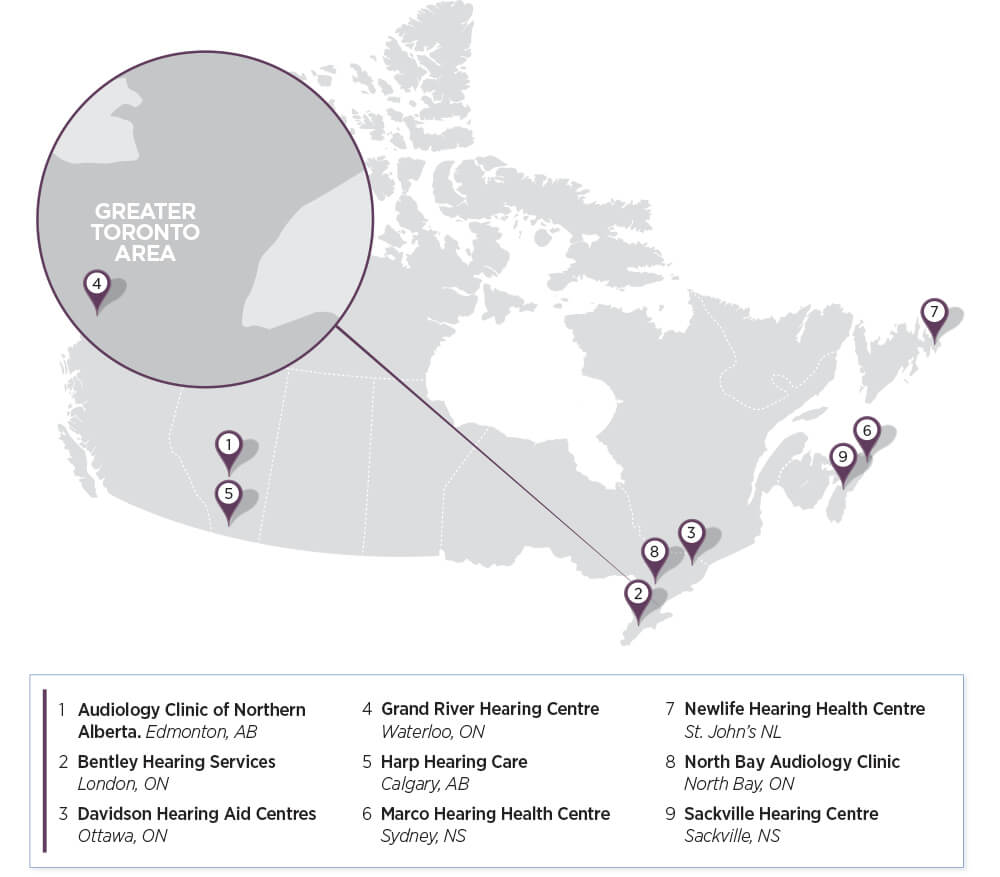
Figure 1: Participating clinics.
PARTICIPANT INCLUSION CRITERIA
In order to provide results that can be applied to different common clinical situations, broad selection criteria were used. Subjects were not excluded based upon type or configuration of hearing loss; instead, hearing loss inclusion criteria were based upon the fitting range of the E-FS 440 with M receiver (Figure 2). Hearing aids were programmed and fit using Widex’s proprietary fitting software (Compass GPS) and fitting targets. The study included experienced users who wore hearing aids produced by Widex and 4 other major manufacturers. Of the 26 subjects in the study, 9 wore non-Widex hearing aids and 17 wore Widex hearing aids.
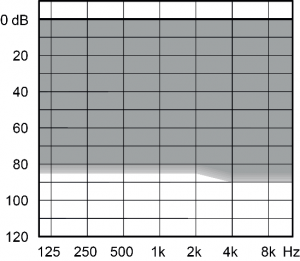
Figure 2: Fitting range of M receiver.
PROCEDURE SUMMARY
Clinicians were given instructions to execute the study and were asked to fit the E-F2 440 devices using the Widex Fitting Rationale available in the Compass GPS fitting software. All patients were assessed, fit, and counselled using best-practice procedures as deemed appropriate by the clinician. Real-ear verification was permitted but clinicians were asked to refrain from adjusting the devices to match generic fitting targets (eg. NAL-NL2) since assessing the Widex Fitting Rationale was a primary interest in the survey.
Participants compared the E-F2 440 hearing aids to their own hearing aids by completing online questionnaires that assessed specific aspects of hearing aid use, app use, as well as satisfaction in a variety of listening situations. The survey took 7 weeks to complete and employed a cross-over design. At week 0, the survey began, and patients answered questions about their own hearing instruments and were also fit with the EVOKE instruments. Then, after wearing the EVOKE instruments for 3 weeks, participants completed the questionnaire again – this time regarding their experience with the EVOKEs. Patients then returned to their own hearing aids for 2 weeks and completed the questionnaire at week 5. Lastly, patients returned to the EVOKEs, wore them for 2 weeks, and answered the final questionnaire regarding the EVOKEs at week 7. This design gave patients the chance to assess each set of instruments twice, increasing the reliability of answers over a single comparison. Data presented here is based on comparisons of the week 5 and week 7 questionnaires (final assessment of each set of instruments). There was no reimbursement for the clinicians or patients.
The survey questions were based on the MarkeTrak surveys (Abrams & Kihm, 2015; Kochkin, 2009) and examined satisfaction with multiple hearing aid characteristics as well as satisfaction in various listening environments. All questionnaires were identical except that the week 3 and week 7 questionnaires contained questions about the EVOKE app and SoundSense Learn, which do not apply to participants’ own hearing aids. Ratings were provided on a 7-point scale that ranged from “Very dissatisfied” (assigned a value of 1) to “Very satisfied” (value of 7), with a rating of 4 being “neutral.” Statistical significance was calculated using Wilcoxon Signed-Rank Tests.
RESULTS
Several hearing aid characteristics and listening situations were assessed in the questionnaires. Here we will focus on examining five key variables: Overall satisfaction, sound quality, use in difficult listening situations (large groups and restaurants), and at home with family.
Overall Satisfaction
As Figure 3 shows, responses shifted to the right (higher ratings) when EVOKE was used as compared to participants’ own hearing aids. The mean shift per participant was 1.38, which is statistically significant. The largest difference was seen at the rating of “Very satisfied” where 7 more participants made this selection for EVOKE compared to their own instruments. Overall, participants showed a significant improvement in overall satisfaction with EVOKE.
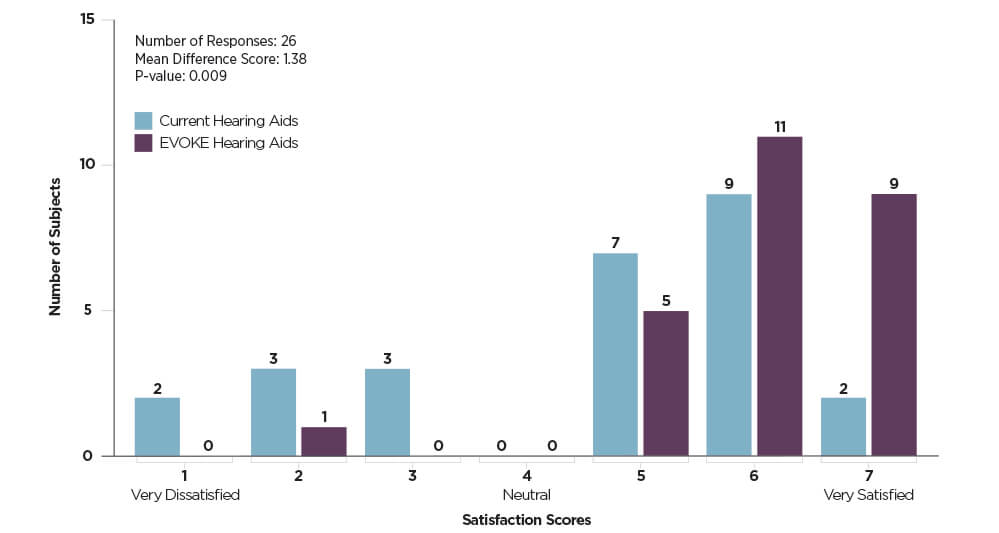
Figure 3: Distribution of Overall Satisfaction
Overall Sound Quality
Overall sound quality, displayed in Figure 4, shows that responses again shifted to the right (higher ratings) when EVOKE was used as compared to participants’ own hearing aids. The mean shift per participant was 1.47, which is a statistically significant difference. The largest difference was seen at the rating of “very satisfied” where 8 more participants made this selection for EVOKE compared to their own instruments. In summary, there was a significant improvement sound quality with EVOKE.
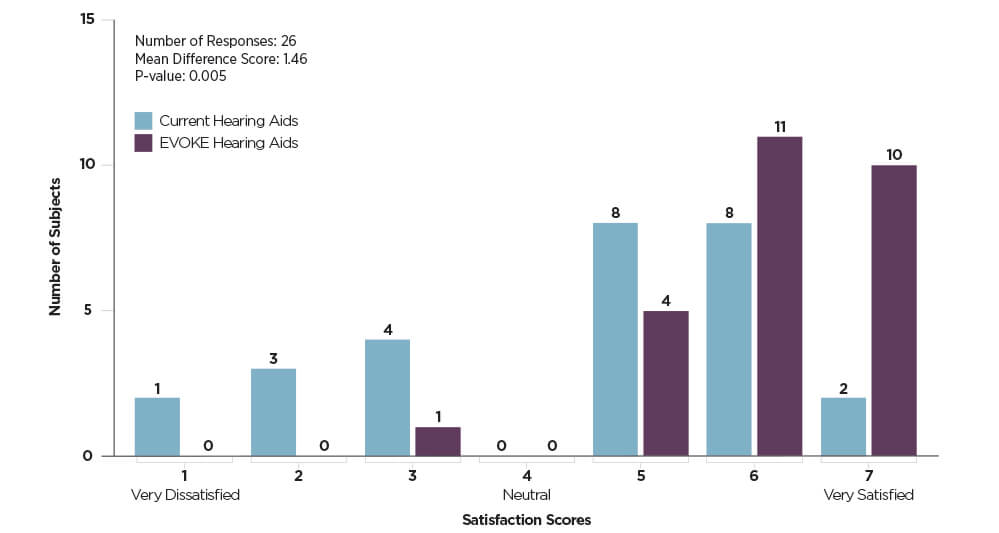
Figure 4: Distribution of Overall Sound Quality
Satisfaction in Specific Situations
Here we will look at satisfaction in 3 specific listening situations: in Large Groups, Restaurants and at home with family. The first 2 represent common hearing-in-noise-situations where hearing aid performance is commonly tested. In contrast, hearing at home with family is often characterized by smaller numbers of talkers and lower overall noise levels compared to the first 2 situations. In looking at these 3 situations specifically, we can begin to assess the hearing aid’s automation capabilities – the ability to automatically adjust and provide optimal performance in widely different acoustic environments.
Figures 5 and 6 display the 2 noise situations: in Large Groups and Restaurants. In both cases, responses shifted to the right (higher ratings) when EVOKE was compared to participants’ own hearing aids. The mean shift per participant in Large Groups was 1.31 and the mean shift for Restaurants was 1.59 – each statistically significant differences. The largest difference was seen for the rating of “very satisfied” where 6 more participants made this selection for EVOKE in Large Groups and 8 more patients made this selection for EVOKE in Restaurants. In summary, we see significant improvement in large groups and in restaurants with EVOKE.

Figure 5: Distribution of hearing in Large Groups
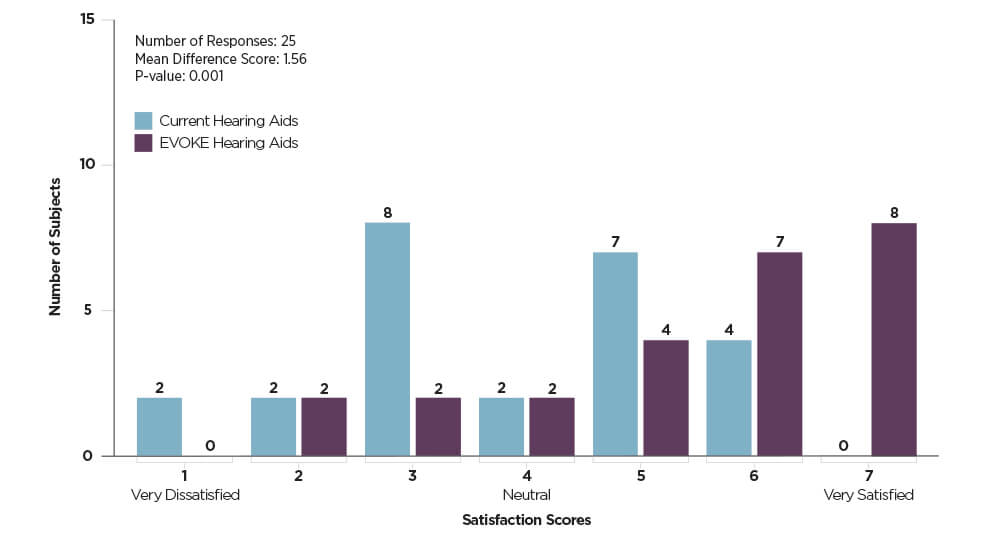
Figure 6: Distribution of hearing in Restaurants
Figure 7 displays satisfaction scores for At Home with Family. Again, responses shifted to the right (higher ratings) when EVOKE was used as compared to participants’ own hearing aids. The mean shift per participant was 1.04 which reached statistical significance. The largest difference was seen at the rating of “very satisfied” where 7 more participants made this selection for EVOKE compared to their own instruments. Here we also see significant improvement when hearing at home with family with EVOKE.

Figure 7: Distribution of hearing At Home with Family
Satisfaction with EVOKE app and SoundSense Learn
Regarding usage of the EVOKE app, 15 of the 17 respondents that used the EVOKE app reported being somewhat satisfied, satisfied, or very satisfied with the EVOKE App (see Figure 8), and no users were dissatisfied with the app. Out of these app users, 65% reported using the app at least a few times per week (see Figure 9). Lastly, of 17 EVOKE app users, 11 reported using SoundSense Learn. Out of those 11 users, 10 (90.1%) reported that SoundSense Learn helped improve a listening situation and 11 (100%) reported that they would recommend SoundSense Learn to a friend.
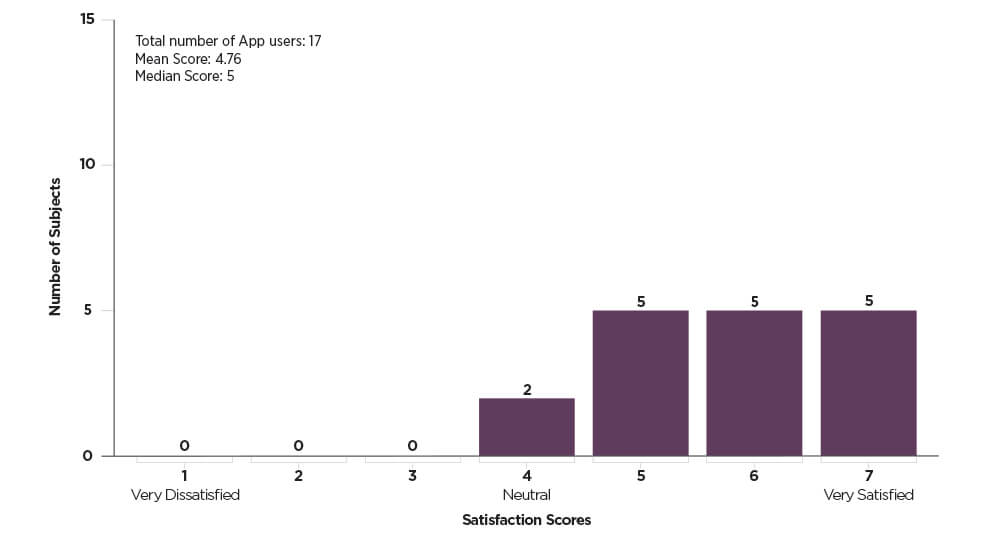
Figure 8: Satisfaction scores for EVOKE app.
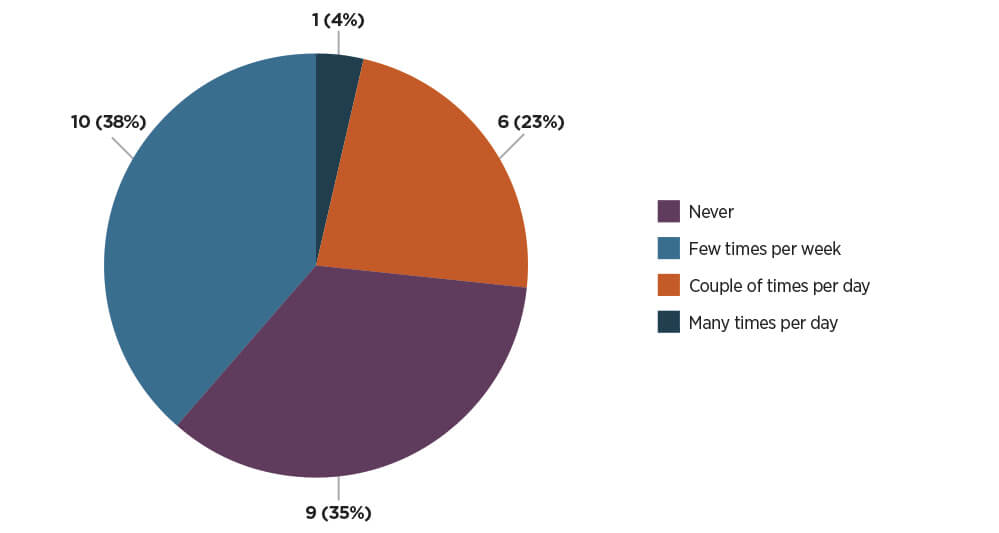
Figure 9: EVOKE app usage data.
RESULTS SUMMARY
In the situations shown in figures 3 through 7, patient satisfaction shifted in the positive direction with E-F2 440 hearing aids, showing increased satisfaction with EVOKE relative to participants’ own hearing aids.
The survey results also provide useful information on the use of the EVOKE app and SoundSense Learn. SoundSense Learn is an app-based tool that uses machine-learning to guide the user to better sound. The patient listens to a series of A/B sound-profile comparisons and makes ratings on which they prefer. Through these A/B comparisons, the feature adjusts a 3-band equalizer to suit the user’s preference and listening intention. Perhaps the most noteworthy finding was that of the 11 users of SoundSense Learn, 10 (90.1%) reported that it helped them hear better in a particular listening situation and all 11 (100%) reported that they would recommend it to a friend.

CONCLUSION
Automation capabilities in modern hearing aids allows for automatic adaptation to different listening situations with the goal of maximizing speech intelligibility, comfort, and sound quality. The automation capabilities in EVOKE undoubtedly played a role in the overall finding that participants rated Widex EVOKE F2 440 hearing aids higher compared to their own hearing aids. The improvement is clearly seen in overall satisfaction, sound quality, use in difficult listening situations (large groups and restaurants), and at home with family.
There are some limitations to Automation. Automation systems can only be built upon assumptions of how and what an individual user wants to hear in different listening situations. This limitation can be addressed by giving the patient the ability to influence hearing aid parameters in a way that’s easy to understand. In Widex EVOKE, this ability to capture the user’s listening intent is accomplished using SoundSense Learn. Those who used the EVOKE app and SoundSense Learn reported that it helped improve at least one listening situation for them and they would recommend it to friends.
The results provide clinicians with relevant evidence to support their clinical decision when prescribing EVOKE. When recommending hearing aids for patients, the primary concern for most clinicians is that the new devices will produce a noticeable improvement in hearing in a variety of listening situations. The study design supports a direct application of its results to real-life clinical settings in Canada and provides evidence that satisfaction levels with EVOKE F2 440 instruments are significantly higher than other existing technologies on the market.
REFERENCES
Abrams HB., Kihm J., (2015). An Introduction to MarkeTrak IX: A New Baseline for the Hearing Aid Market. Hearing Review, 22(6):16. Available at: http://www.hearingreview.com/2015/05/introduction-marketrak-ix-new-baseline-hearing-aid-market
Dollaghan, C. (2007). The Handbook for Evidence-Based Practice in Communication Disorders. Baltimore, MD, Brookes Publishing.
Kalef, R., Lau, C., Liu, R., McFadden, M., Sharpe, M. (2016). A Canadian Evaluation of Real-Life Satisfaction of Hearing Aids in Challenging Environments, Canadian Audiologist, 3 (5).
Kalef, R., Adam, I., Davidson-Bertrand, J., Leutri, S., Levionnois, J., McFadden, M., Sorensen, N., Gent, S. (2018). Indsutry Research: A Candadian Evaluation of Real-Life Hearing Aids with Direct Connectivity. Canadian Audiologist, 5(6).
Kochkin, S. (2009). MarkeTrak VIII: 25-Year Trends in the Hearing Health Market. Hearing
Review, 16(11), 12-31.
Winther Balling, L., Townend, O., Switalski, W. (2019). Real-Life Hearing Aid Benefit with Widex EVOKE. Hearing Review. January, 2019.
DISCLAIMER
Participants were not paid for their participation. Subjects had the option to purchase the hearing aids following the study at a discounted rate. The discount was not presented to them until following the study. Craig Spencer is an Audiologist working for Widex Canada. Contact at c.spencer@widexcanada.com for more information.

